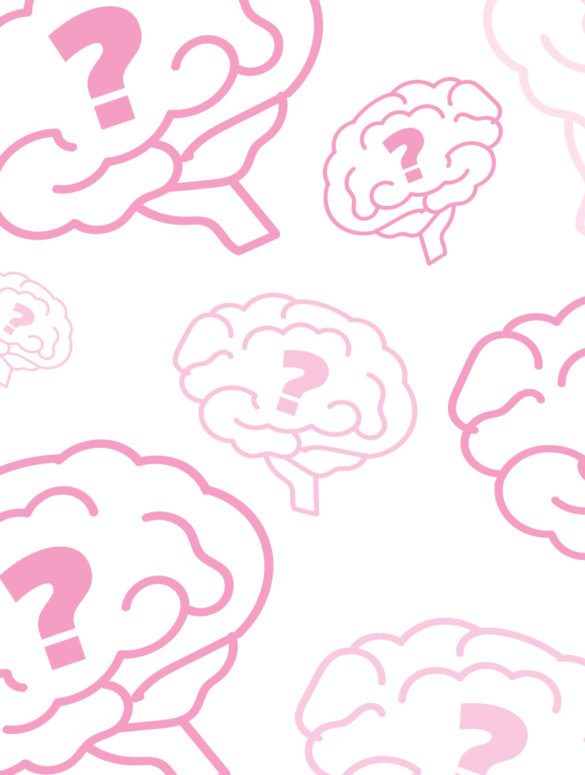Liquid Chlorophyll became known as a “miracle drink” that claims to help people lose weight, boost energy, prevent cancer and reduce acne after it became popular on TikTok.
TikTok is influencing people to dry scoop workout powder, put protein powder in coffee, use a weighted hula-hoop, wash hair with rice water and sugar wax. A Harvard University survey found that almost one in five Americans turn to TikTok before their doctor for medical advice.
The internet has changed the relationship and communication between health care providers and patients. Anyone can put out health information, even if it is false. It is important to make sure the information is coming from a credible source.
Health care providers have started to use social media to communicate and build a relationship with their patients as well as combat the influx of false medical information.
Nine out of 10 adults have difficulty using everyday health information, according to the U.S. Department of Health and Human Services’ National Plan to Improve Health Literacy.
According to The Centers for Disease Control and Prevention (CDC), health literacy is the sophisticated term for understanding your health and can be understood as how people access and understand health-related information.
Kristin Trainor, assistant professor of social work at Ball State University, has researched potential stigma among health care professionals and ways to improve the relationship between health care professionals and patients.
Health literacy is a broad and complex topic, and there is no simple solution.
“There’s plenty of times where there’s been providers where I’m like, nope, I’m not going back…because I didn’t feel safe. I didn’t feel comfortable. I didn’t feel like my questions were answered or I didn’t feel like I was allowed to ask questions,” Trainor says.
Trainor explains that health literacy looks different for everyone depending on how patients best learn information.
“We have to recognize all of those different learning styles and opportunities and being able to have the information readily available in different platforms,” she says. “Some people want to have that communication together, where we’re talking through and I’m repeating back what I heard you say and how I processed it, while others would rather have time to listen to an educational podcast or watch a video on it, and none of those ways are wrong.”
Christina Doll, associate professor of health at Ball State University, focuses her work on school-based food pantries and how health information is distributed to the families of that community. She emphasizes that health literacy is not just being able to read and recognize health terms, but to be able to put the information into practice.
“Without people being able to understand the information and make use of it, they run the risk of not managing their disease [or] condition, then coming right back to the hospital,” Doll says, “and when you insert our populations that are low income and using government subsidized care, we’re all paying for their multiple visits to the doctor that are just becoming more burdensome because they weren’t given the right advice the first time.”
According to the Indiana State Department of Health, there is a 17 to 1 population to local health department staff members and a 695 to 1 ratio in Marion County.
“Apart from the burden of just not having enough funds to pay for care or get transportation to care, we also find that there’s a lot of distrust of the medical system based upon the cost of medical care. [Patients] feel like their money is wasted if they make a visit and they don’t get the time that they deserve,” Doll says.
Doll also encourages patients to not be afraid to ask your doctor questions or think that your question is not smart enough.
“My mom went through cancer a few years ago, and I went to a lot of appointments with her because I was her caregiver. And there were times where even myself, as a doctorally-educated person in health education, struggled to understand the medical terminology that the doctors are talking about,” Doll says.
Second-year psychology major Brooke Tienkin was left without health insurance after her dad retired from his job that provided the family’s health insurance.
“I was terrified. I was like, ‘oh my God, if I get in a car accident, I’m going to be so screwed,’” Brooke says. “I am definitely more socially and physically aware.”
Without health insurance, patients must pay out-of-pocket for their visit. For Brooke, the best way to receive health information was to call a nurses line so that she would only pay for health emergencies.
Brooke found it interesting to see, for the first time, that if you’re not willing to pay the money, they’re not going to give you the care. It caused her to become more cautious and question whether or not she needs medical care when an issue arises.
Brooke, like many others, has knowledge about her health, but has outside factors that can prohibit her from receiving the type of care she needs.
The Healthy Lifestyle Center, which provides education, services and programming to the Delaware County community, has begun a monthly podcast called “Habits” that discusses various health topics.
The Healthy Lifestyle Center is just one of the many providers that have dove into the internet to spread accurate and credible information to the public.
Doll suggests to “pick your health problem and look for the National Institute of it, and those are the government-sponsored organizations that really do a good job of sifting through research to find the good stuff.”
A lack of health literacy does not just impact one person, one community, one topic. It impacts everyone.
Sources: Bill of Health, National Action Plan to Improve Health Literacy, Centers for Disease Control and Prevention, INdicators, The Healthy Lifestyle Center



